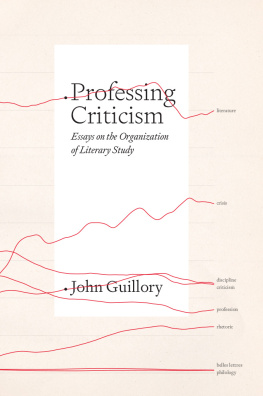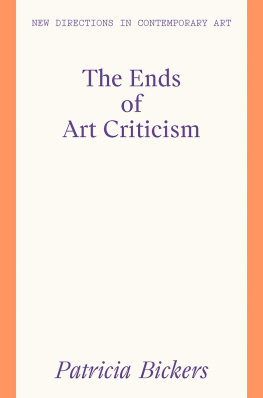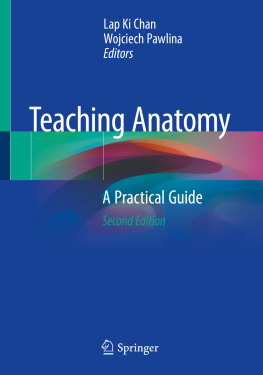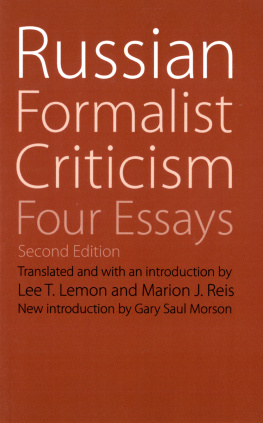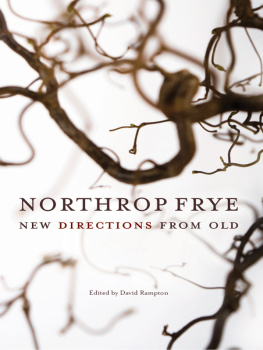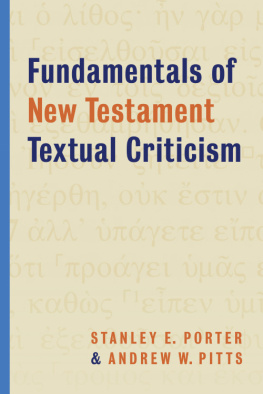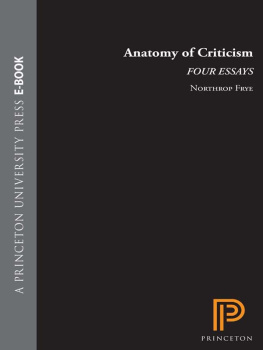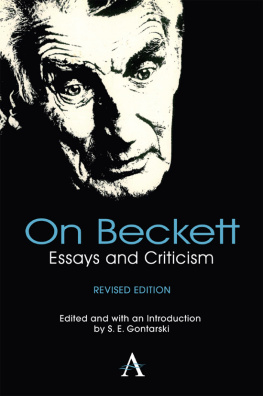Frye - Anatomy of criticism : four essays
Here you can read online Frye - Anatomy of criticism : four essays full text of the book (entire story) in english for free. Download pdf and epub, get meaning, cover and reviews about this ebook. City: Princeton, year: 1973, publisher: Princeton University Press, genre: Science. Description of the work, (preface) as well as reviews are available. Best literature library LitArk.com created for fans of good reading and offers a wide selection of genres:
Romance novel
Science fiction
Adventure
Detective
Science
History
Home and family
Prose
Art
Politics
Computer
Non-fiction
Religion
Business
Children
Humor
Choose a favorite category and find really read worthwhile books. Enjoy immersion in the world of imagination, feel the emotions of the characters or learn something new for yourself, make an fascinating discovery.
Anatomy of criticism : four essays: summary, description and annotation
We offer to read an annotation, description, summary or preface (depends on what the author of the book "Anatomy of criticism : four essays" wrote himself). If you haven't found the necessary information about the book — write in the comments, we will try to find it.
The Description for this book, Anatomy of Criticism, will be forthcoming.
Frye: author's other books
Who wrote Anatomy of criticism : four essays? Find out the surname, the name of the author of the book and a list of all author's works by series.
Anatomy of criticism : four essays — read online for free the complete book (whole text) full work
Below is the text of the book, divided by pages. System saving the place of the last page read, allows you to conveniently read the book "Anatomy of criticism : four essays" online for free, without having to search again every time where you left off. Put a bookmark, and you can go to the page where you finished reading at any time.
Font size:
Interval:
Bookmark:

ANATOMY OF CRITICISM
Four Essays
Anatomy of Criticism
FOUR ESSAYS
by NORTHROP FRYE
PRINCETON, NEW JERSEY
PRINCETON UNIVERSITY PRESS
1957
Copyright 1957, by Princeton University Press
All Rights Reserved
L.C. Card No. 56-8380
ISBN 0-691-01298-9 (paperback edn.)
ISBN 0-691-06004-5 (hardcover edn.)
Publication of this book has been aided by a grant from the Council of the Humanities, Princeton University, and the Class of 1932 Lectureship.
First Princeton Paperback Printing, 1971
Tenth Hardcover Printing, 1971
This book is sold subject to the condition that it shall not, by way of trade, be lent, resold, hired out, or otherwise disposed of without the publishers consent, in any form of binding or cover other than that in which it is published.
Printed in the United States of America
by Princeton University Press, Princeton, New Jersey
HELENAE UXORI
PREFATORY STATEMENTS AND ACKNOWLEDGMENTS
THIS book forced itself on me while I was trying to write something else, and it probably still bears the marks of the reluctance with which a great part of it was composed. After completing a study of William Blake (Fearful Symmetry, 1947), I determined to apply the principles of literary symbolism and Biblical typology which I had learned from Blake to another poet, preferably one who had taken these principles from the critical theories of his own day, instead of working them out by himself as Blake did. I therefore began a study of Spensers Faerie Queene, only to discover that in my beginning was my end. The introduction to Spenser became an introduction to the theory of allegory, and that theory obstinately adhered to a much larger theoretical structure. The basis of argument became more and more discursive, and less and less historical and Spenserian. I soon found myself entangled in those parts of criticism that have to do with such words as myth, symbol, ritual, and archetype, and my efforts to make sense of these words in various published articles met with enough interest to encourage me to proceed further along these lines. Eventually the theoretical and the practical aspects of the task I had begun completely separated. What is here offered is pure critical theory, and the omission of all specific criticism, even, in three of the four essays, of quotation, is deliberate. The present book seems to me, so far as I can judge at present, to need a complementary volume concerned with practical criticism, a sort of morphology of literary symbolism.
I am grateful to the J. S. Guggenheim Memorial Foundation for a Fellowship (1950-1951) which gave me leisure and freedom to deal with my Protean subject at the time when it stood in the greatest need of both.
I am also grateful to the Class of 1932 of Princeton University, and to the Committee of the Special Program in the Humanities at Princeton, for providing me with a most stimulating term of work, in the course of which a good deal of the present book took its final shape. This book contains the substance of the four public lectures delivered in Princeton in March 1954.
The Polemical Introduction is a revised version of The Function of Criticism at the Present Time, University of Toronto Quarterly, October 1949, also reprinted in Our Sense of Identity, ed. Malcolm Ross, Toronto, 1954. The first essay is a revised and expanded version of Towards a Theory of Cultural History, University of Toronto Quarterly, July 1953. The second essay incorporates the material of Levels of Meaning in Literature, Kenyon Review, Spring 1950; of Three Meanings of Symbolism, Yale French Studies No. 9 (1952); of The Language of Poetry, Explorations 4 (Toronto, 1955); and of The Archetypes of Literature, Kenyon Review, Winter 1951. The third essay contains the material of The Argument of Comedy, English Institute Essays 1948, Columbia University Press, 1949; of Characterization in Shakespearean Comedy, Shakespeare Quarterly, July 1953; of Comic Myth in Shakespeare, Transactions of the Royal Society of Canada (Section II), June 1952; and of The Nature of Satire, University of Toronto Quarterly, October 1944. The fourth essay contains the material of Music in Poetry, University of Toronto Quarterly, January 1942; of A Conspectus of Dramatic Genres, Kenyon Review, Autumn 1951; of The Four Forms of Prose Fiction, Hudson Review, Winter 1950; and of Myth as Information, Hudson Review, Summer 1954. I am greatly obliged to the courtesy of the editors of the above-mentioned periodicals, the Columbia University Press, and the Royal Society of Canada, for permission to reprint this material. I have also transplanted a few sentences from other articles and reviews of mine, all from the same periodicals, when they appeared to fit the present context.
For my further obligations, all that can be said here, and is not less true for being routine, is that many of the virtues of this book are due to others: the errors of fact, taste, logic, and proportion are poor things, but my own.
N. F.
Victoria College
University of Toronto
Contents
ANATOMY OF CRITICISM
Four Essays
Polemical Introduction
THIS BOOK consists of essays, in the words original sense of a trial or incomplete attempt, on the possibility of a synoptic view of the scope, theory, principles, and techniques of literary criticism. The primary aim of the book is to give my reasons for believing in such a synoptic view; its secondary aim is to provide a tentative version of it which will make enough sense to convince my readers that a view, of the kind that I outline, is attainable. The gaps in the subject as treated here are too enormous for the book ever to be regarded as presenting my system, or even my theory. It is to be regarded rather as an interconnected group of suggestions which it is hoped will be of some practical use to critics and students of literature. Whatever is of no practical use to anybody is expendable. My approach is based on Matthew Arnolds precept of letting the mind play freely around a subject in which there has been much endeavor and little attempt at perspective. All the essays deal with criticism, but by criticism I mean the whole work of scholarship and taste concerned with literature which is a part of what is variously called liberal education, culture, or the study of the humanities. I start from the principle that criticism is not simply a part of this larger activity, but an essential part of it.
The subject-matter of literary criticism is an art, and criticism is evidently something of an art too. This sounds as though criticism were a parasitic form of literary expression, an art based on pre-existing art, a second-hand imitation of creative power. On this theory critics are intellectuals who have a taste for art but lack both the power to produce it and the money to patronize it, and thus form a class of cultural middlemen, distributing culture to society at a profit to themselves while exploiting the artist and increasing the strain on his public. The conception of the critic as a parasite or artist manqu is still very popular, especially among artists. It is sometimes reinforced by a dubious analogy between the creative and the procreative functions, so that we hear about the impotence and dryness of the critic, of his hatred for genuinely creative people, and so on. The golden age of anticritical criticism was the latter part of the nineteenth century, but some of its prejudices are still around.
However, the fate of art that tries to do without criticism is instructive. The attempt to reach the public directly through popular art assumes that criticism is artificial and public taste natural. Behind this is a further assumption about natural taste which goes back through Tolstoy to Romantic theories of a spontaneously creative folk. These theories have had a fair trial; they have not stood up very well to the facts of literary history and experience, and it is perhaps time to move beyond them. An extreme reaction against the primitive view, at one time associated with the art for arts sake catchword, thinks of art in precisely the opposite terms, as a mystery, an initiation into an esoterically civilized community. Here criticism is restricted to ritual masonic gestures, to raised eyebrows and cryptic comments and other signs of an understanding too occult for syntax. The fallacy common to both attitudes is that of a rough correlation between the merit of art and the degree of public response to it, though the correlation assumed is direct in one case and inverse in the other.
Next pageFont size:
Interval:
Bookmark:
Similar books «Anatomy of criticism : four essays»
Look at similar books to Anatomy of criticism : four essays. We have selected literature similar in name and meaning in the hope of providing readers with more options to find new, interesting, not yet read works.
Discussion, reviews of the book Anatomy of criticism : four essays and just readers' own opinions. Leave your comments, write what you think about the work, its meaning or the main characters. Specify what exactly you liked and what you didn't like, and why you think so.



